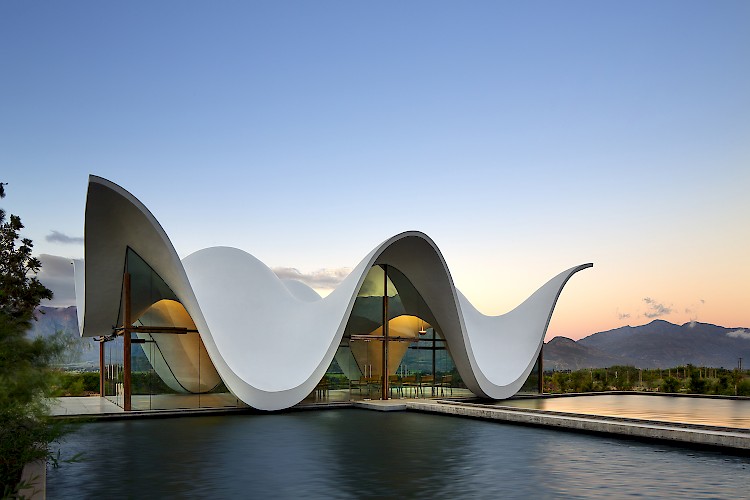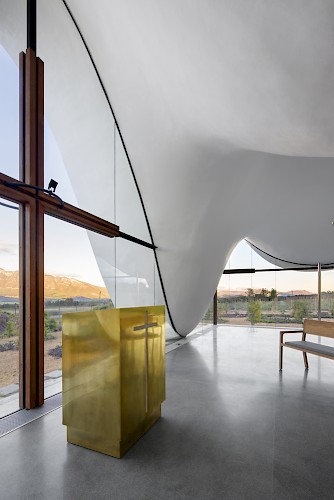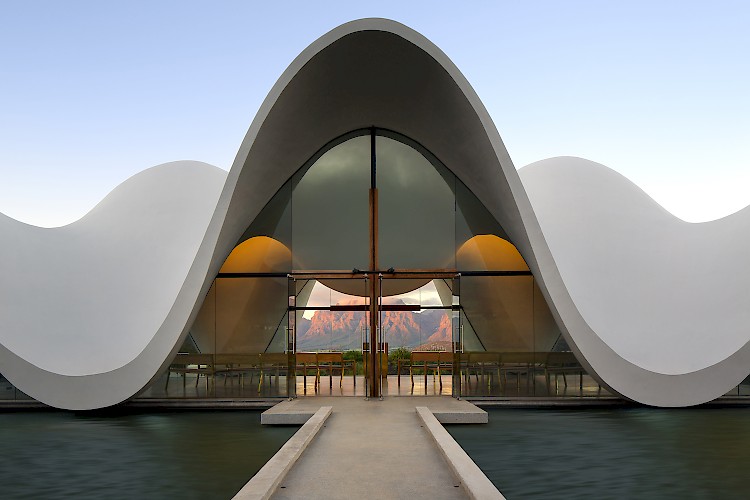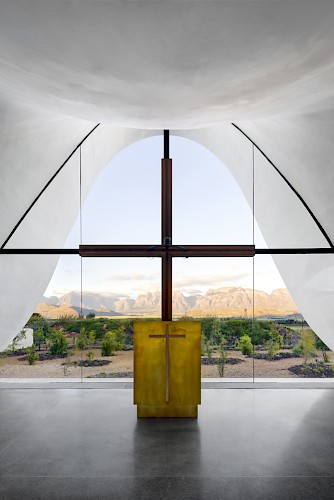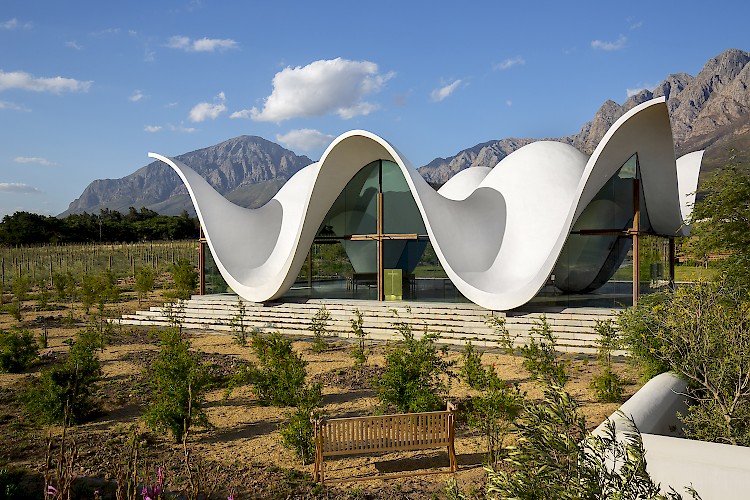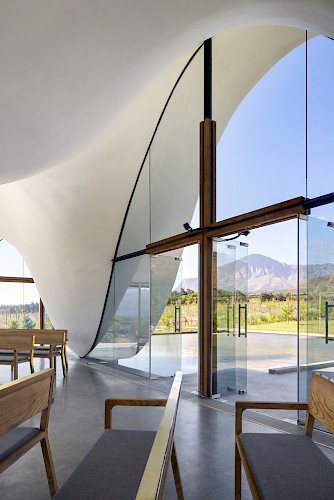Chapel
‘Psalm 36:7’
The Bosjes Estate is surrounded by majestic mountains with a grand scale which adorned the area with the nickname of ‘Little Switzerland’. Typically Cape Dutch Manor houses set up dialogue with these types of environments, as found in Stellenbosch and Cape Town. With the immediate context of the site, the valley is ‘held’ either side with two mountain ranges which sets up a spatial dialogue at a grand scale which occurs on a ‘micro’ level between the Manor House development node and the Chapel development node; across the vineyards and gardens.
The Bosjes chapel development reflects, in microcosm, one half of what already exists at the scale of the valley as a whole in terms of its sculptural relationship, as does currently exist between the Manor House and the Waaihoek Mountains. The development profile, architectural form and massing responds sculpturally to the natural configuration of the mountain backdrop.
Similarly the text of Psalm 36:7 is also considered as an important informative from a poetic point of view, and its interpretation, architecturally, as a structure which ‘floats/glides’ and has motion, although physically static.
In order to achieve the visual ‘lightness’ of the roof; the structure had to be simple, unifying and as structurally efficient as possible. It was therefor decided that the roof can also become the walls/columns; its own supporting structure. To realise this we investigated parabolic/hyperbolic arches and surfaces; and its use in thin shell concrete structures.
This translated into the sculptural form which emulates the surrounding mountains as well as the poetic motion sought. This lightness & motion is further emphasised by means of a strategically placed reflection pond. The form is further refined by means of the interpretation of the baroque ‘holbol’ gable, found on the Bosjes Manor House in the edge profile and the roof shape. The main characteristic of a ‘holbol’ gable is that of the combination of outward in inward curvatures which results in a series of ‘peaks’ and ‘valleys’ within the roof itself. Similar to the Mission Churches it has no vertical elements and the form is generally horizontal. As with the gables present on these churches, the identifying element on the Bosjes Chapel is that of its roof and its shaped edges.
Apart from investigating the local history of the farm we also looked at Moravian Missionary Stations as inspiration. The aim of the chapel is also to reflect the following qualities present in these historic missionary churches of Mamre, Elim and Wupperthal:
- utilitarian simplicity of its plan as an assembly space
- scale
- cultural reference
- tranquillity of its white lit interiors
- ‘tactileness’ of its undulating whitewashed walls
However, whereas these churches are mostly inward looking and spiritually reflective, the proposed chapel is to be a more ‘open’ space which invites in, as well as expands its intimacy to the valley and mountains beyond, raising the awareness of God’s creation in the immediate surroundings.
Info
Date| Client| Design Architect| Location| Construction Cost| Gross Floor Area| Executive Architect| Landscape Architect|
Quantity Surveyor| Structural Engineers| Services Engineer| Planning Consultant| Heritage Consultants|
Photography| | 2011 - 2016 Confidential STEYN studio R43| Witzenberg Confidential 200sqm TV3 Architects CNdV
De Leeuw Henry Fagan Solution Station Ron Brunings Graham Jacobs, Elzet Albertyn & Lize Malan Adam Letch |
